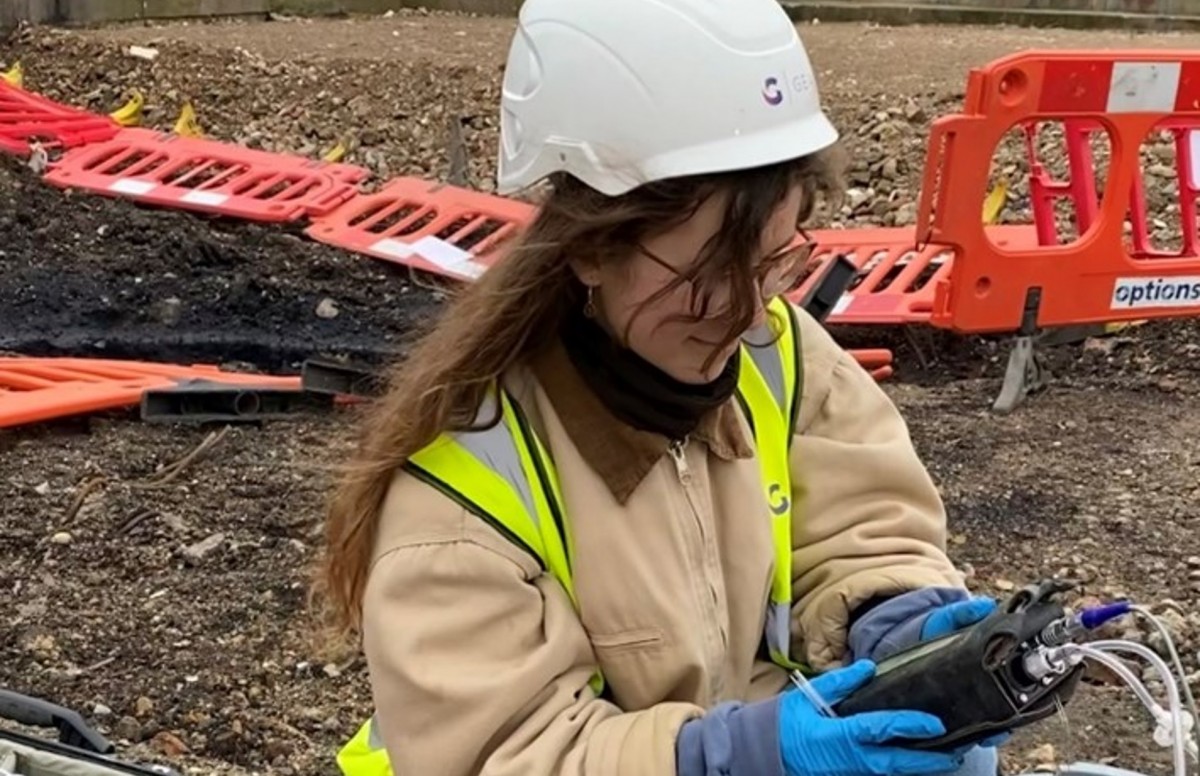The Buzz on Geotheta
The Buzz on Geotheta
Blog Article
The Best Guide To Geotheta
Table of ContentsThe Main Principles Of Geotheta Getting My Geotheta To Work6 Simple Techniques For GeothetaGeotheta Things To Know Before You BuySome Of Geotheta

They perform website investigations, gather examples, perform lab examinations, and evaluate information to examine the viability of the ground for building and construction tasks - Tailings Engineer. Based on their findings, geotechnical engineers offer referrals for foundation style, slope security, preserving frameworks, and reduction of geotechnical hazards. They work together with various other professionals, such as architects, structural engineers, and construction teams, to guarantee that geotechnical factors to consider are incorporated right into the total task layout and application
By examining the habits and buildings of dirt and rock, they can determine prospective geotechnical hazards such as landslides, dirt settlement, or slope instability. Their know-how assists avoid failures or accidents that can threaten lives and home. Below are some in-depth duties and responsibilities of a geotechnical designer: Website Investigation: Geotechnical designers conduct site examinations to gather data on subsurface conditions.
They translate the data to comprehend the residential or commercial properties and actions of the soil and rock, including their strength, permeability, compaction characteristics, and groundwater conditions. Geotechnical Evaluation and Layout: Geotechnical designers assess the information gathered during site investigations to assess the stability and suitability of the website for building and construction tasks. They do geotechnical estimations and modeling to review aspects such as birthing capability, settlement, slope stability, side planet stress, and groundwater circulation.
A Biased View of Geotheta
Structure Layout: Geotechnical engineers play a crucial role in designing foundations that can securely support the intended structure. They examine the dirt conditions and tons requirements to determine the appropriate foundation kind, such as shallow structures (e.g., footings), deep structures (e.g (https://www.tripadvisor.in/Profile/geotheta1)., stacks), or specialized strategies like soil improvement. They consider variables such as negotiation limitations, birthing ability, and soil-structure communication to create optimal foundation layouts
They evaluate construction strategies, monitor website tasks, and perform area examinations to confirm that the style referrals are complied with. If unexpected geotechnical concerns develop, they examine the circumstance and supply referrals for removal or adjustments to the design. Threat Analysis and Reduction: Geotechnical engineers evaluate geotechnical hazards and dangers related to the project site, such as landslides, liquefaction, or dirt disintegration.

Collaboration and Communication: Geotechnical designers function carefully with other professionals associated with a task, such as engineers, structural engineers, and construction groups. Efficient interaction and collaboration are essential to integrate geotechnical factors to consider into the total project layout and building and construction process. Geotechnical engineers provide technological knowledge, solution inquiries, and guarantee that geotechnical needs are fulfilled.
The Basic Principles Of Geotheta
Right here are some kinds of geotechnical engineers: Foundation Engineer: Foundation designers concentrate on making and assessing structures for structures. They analyze the dirt conditions, tons demands, and website attributes to establish one of the most proper structure kind and layout, such as shallow foundations, deep structures, or specialized strategies like stack foundations.
They review the elements affecting slope security, such as dirt residential or commercial properties, groundwater conditions, and incline geometry, and develop techniques to avoid incline failures and mitigate threats. Quake Designer: Earthquake designers focus on assessing and developing frameworks to withstand seismic pressures. They assess the seismic threat of a site, evaluate dirt liquefaction capacity, and create seismic design standards to guarantee the safety and security and resilience of frameworks during quakes.
They carry out field screening, gather samples, and examine the collected information to characterize the dirt residential or commercial properties, geologic formations, and groundwater problems at a website. Geotechnical Instrumentation Engineer: Geotechnical instrumentation engineers concentrate on monitoring and gauging the habits of soil, rock, and structures. They set up and preserve instrumentation systems that keep track of variables such as dirt settlement, groundwater levels, incline motions, and architectural variations to evaluate efficiency and supply very early cautions of potential issues.
The Single Strategy To Use For Geotheta
They carry out examinations such as triaxial examinations, debt consolidation examinations, straight shear examinations, and permeability tests to collect information for geotechnical evaluation and layout. Geosynthetics Engineer: Geosynthetics engineers specialize in the layout and application of geosynthetic materials, such as geotextiles, geogrids, and geomembranes. They make use of these materials to improve dirt security, reinforce inclines, give drainage services, and control erosion.
They often tend to learn this here now be investigative individuals, which implies they're intellectual, reflective, and investigative. They wonder, methodical, sensible, logical, and sensible. Several of them are likewise social, suggesting they're kind, charitable, participating, person, caring, useful, empathetic, sensible, and friendly. Does this seem like you? Take our free profession test to figure out if geotechnical engineer is just one of your leading job matches.
In the workplace atmosphere, geotechnical engineers make use of specialized software devices to do calculations, create layouts, and examine information. They prepare reports, testimonial task specs, communicate with customers and group members, and coordinate job tasks. The office setup offers a helpful atmosphere for research, evaluation, and collaboration with various other professionals associated with the job.
The Definitive Guide to Geotheta
They regularly go to task sites to perform site examinations, assess geotechnical conditions, and gather information for evaluation. These gos to include taking a trip to various places, in some cases in remote or challenging terrains. Geotechnical designers might do dirt tasting, conduct examinations, and display construction activities to ensure that the geotechnical facets of the job are being applied appropriately.
Geotechnical designers additionally work in specialized geotechnical laboratories. Geotechnical lab engineers work thoroughly in these environments, dealing with testing tools, running tools, and recording information.
Report this page